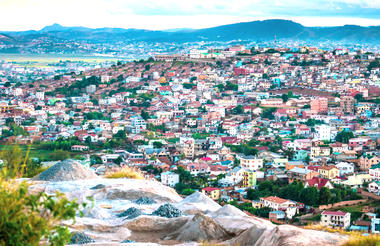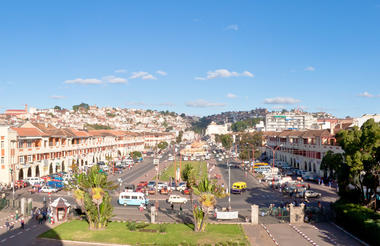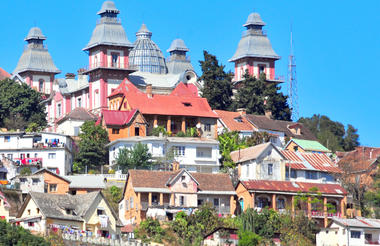Evolution has occurred more or less in isolation on this remote island – located 400 kilometres off Africa’s east coast – with the result that much of its indigenous wildlife is found nowhere else on earth. Madagascar’s menagerie of weird and wonderful creatures includes the world’s biggest and smallest chameleons and over 70 species of lemur – long-tailed primates endemic to the island. The Madagascan landscape is no less compelling than the resident wildlife, with terrain ranging from lush jungles and palm-fringed beaches to the knife-edged karst tsingys of the Tsingy de Bemaraha National Park’s ‘stone forests’. Madagascar is an otherworldly paradise where visitors are offered a unique glimpse into a fantastical one-of-a-kind world.
Antananarivo, also known as Tana, is Madagascar’s capital city. It is perched at 1400 metres above sea level crowning a spectacular mountain range. Founded in 1625, Antananarivo, often considered only as a starting point to the South, North, East and West regions, Antananarivo still has a rich historical heritage that is complemented by scenic landscapes covered in a large network of popular hiking routes.
Known for its vibrant nightlife, Antananarivo features local live music at a variety of clubs and bars.
The city is divided into 3 parts, the upper, middle and lower city. The upper town is the most visited part with its Rova or Queen's Palace which dominates the whole city and offers an exceptional panorama. Another curiosity not to be missed is the large market of Tana or Zoma located in the lower town and whose scents and colours will delight you.
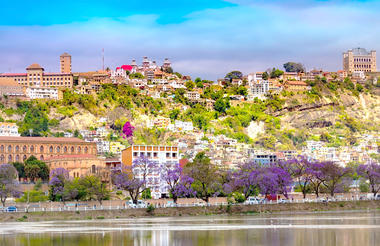
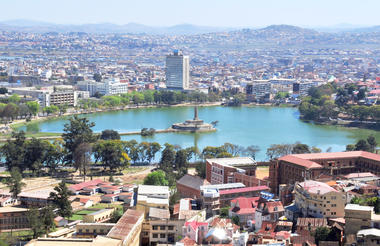
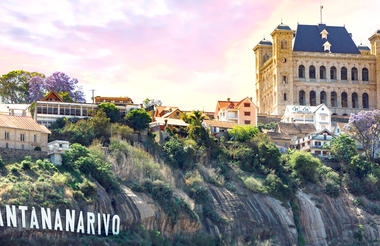
Perched in the Central Highlands, Antsirabe serves as the capital of the Vakinankaratra Region. Known as the ‘Malagasy Vichy’ because of its numerous hot springs and thermal baths, Madagascar’s third largest city offers tourists a bustling and gritty atmosphere in a setting reminiscent of the Belle Epoque. The city can be experienced on foot or on one of the many colourful pulled rickshaws - referred to locally as 'pousse-pousses'. The city’s charming attractions include French colonial buildings dating back to the early 20th century, Scandinavian villas, vibrant markets, and artisan workshops. Nno visit is complete without a trip up Ivohitra Hill, where a panoramic view of the scenic highlands awaits.



A quaint farming community surrounded by verdant valleys on the banks of Namorona River, the small town of Ranomafana is situated in the district of Ifanadiana in the Vatovavy-Fitovinany Region of southeastern Madagascar. Just a few kilometres away from town is the famous Ramofana National Park, a 41 600-hectare expanse of thriving rainforest. Nature lovers can enjoy hiking through the mountainous terrain, enjoy a leisurely soak in the thermal hot waters and view the abundant wildlife that inhabits the area including twelve lemur species, varying species of bats, tenrecs, mongooses, chameleons, spiders and over a hundred species of bird. Located east of Ranomafana is the picturesque Ranomafana Arboretum, an impressive botanical garden that boasts over 250 plant species and 36 tree species that thrive in this pristine paradise.



Located in south central Madagascar, the royal 19th-century city of Fianarantsoa has grown over the years to become Madagascar’s cultural and intellectual hub. Serving as Madagascar’s third largest city, Fianarantsoa is home to numerous schools and academic establishments, impressive colonial architecture, and more churches per square metre than any other city in the country. A popular attraction is the old historic centre of Anatirova, where tourists can enjoy panoramic views of the city. Fianarantsoa is also located in the country’s richest wine-producing region, making wine tours and tastings a popular pastime. Visitors can also enjoy browsing the local market and exploring Haute-Ville, with its cobbled streets and great views.



Situated in the south of Madagascar, the small town of Ranohira serves as the gateway to the beautiful Isalo National Park. Surrounded by sprawling grasslands and rocky mountain outcrops, Ranohira is a tranquil outpost that provides an excellent spot to catch your breath before embarking on an adventure into the park, which could last anything from several hours to several weeks. In and around Ranohira, visitors are offered a variety of accommodation options ranging from simple rooms to luxurious bungalows and even camping for the more adventurous. While here, take the opportunity to soak up the authentic rural atmosphere of this unassuming settlement, which is mostly populated by the nomadic farming Bara people.



As previously described
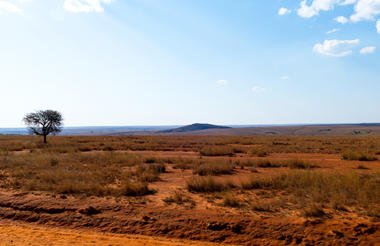

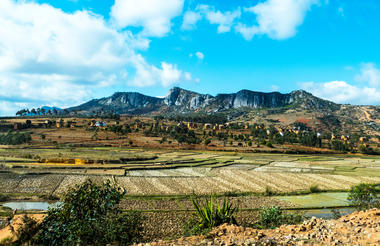
Located on the western coast of Madagascar, the resort town of Ifaty offers visitors the perfect laidback setting in which to wind down and get away from it all. The town is comprised of two small fishing villages: Mangily and Madio Rano. Thanks to an extensive coral reef that keeps rough conditions away, the surrounding waters are calm and offer fantastic diving, fishing and snorkelling opportunities. Towards the interior, birdwatchers and botanical enthusiasts will enjoy the spiny forests dotted with spectacular baobab trees and home to a large number of interesting bird and plant species. Throughout July and August, lucky visitors can spot migrating whales as they pass through the Mozambique Channel.



As previously described



As previously described
